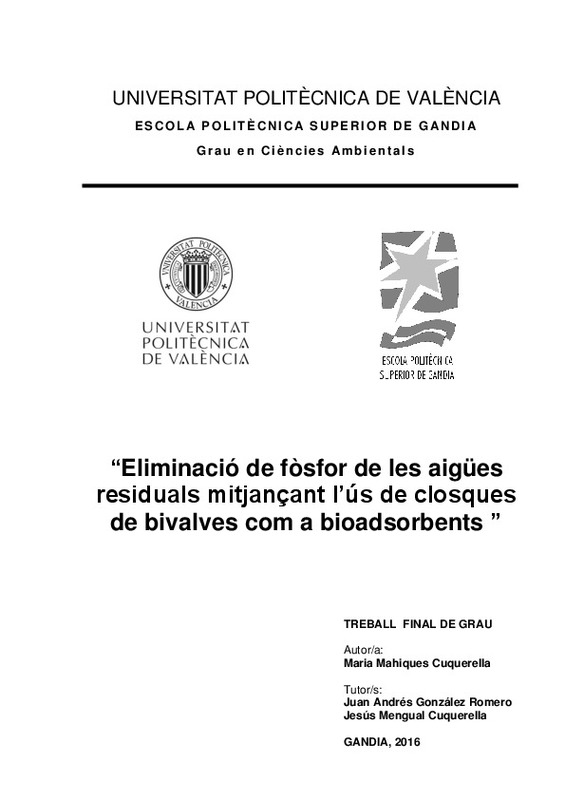|
Resumen:
|
L’eutrofització és un problema que afecta gran part de l’aigua dolça del nostre país, i que
dificulta el seu consum. Aquest problema que pot donar-se de manera natural, s’ha vist agreujat
pels vessaments que realitza ...[+]
L’eutrofització és un problema que afecta gran part de l’aigua dolça del nostre país, i que
dificulta el seu consum. Aquest problema que pot donar-se de manera natural, s’ha vist agreujat
pels vessaments que realitza l’ésser humà dels nutrients que afavoreixen aquest procés, com
són el fòsfor i el nitrogen. El fòsfor es considera el principal element de formació de l’estat
d’eutrofització de l’aigua, és per això que en aquest estudi ens centrarem en intentar eliminar
la presència de fòsfor en les aigües. Per a l’eliminació de fòsfor s’han estat emprant diferents
tècniques, però en la actualitat els estudis es centren en la utilització d’una tècnica amb costos
més baixos econòmics i ambientals. Aquest és el cas de la bioadsorció, que empra materials
biològics per tal d’adsorbir fòsfor. En el nostre estudi s’ha utilitzat com a bioadsorbent les
closques de bivalves, que presenten una gran capacitat d’adsorció. Aquest material s’ha tractat
prèviament de diferents maneres, un s’ha utilitzat en el seu estat natural i altre ha estat calcinat.
Després de realitzar-se diferents assajos experimentals en discontinu amb diferents
característiques, i utilitzant aigua sintètica i una aigua procedent d’una EDAR, s’ha arribat a
diferents conclusions. Com a conclusió principal podem dir que el material emprat aconsegueix
eliminar el fòsfor present en l’aigua, però que presenta diferencies depenent del tractament
previ, el calcinat aconsegueix eliminar més fòsfor que el natural. En general aquest tractament
pot ajudar a controlar els nivells de fòsfor de les aigües.
[-]
Eutrophication is a problem that affects much of the freshwater of our country and makes it
difficult to use. This problem that can occur naturally, has been aggravated by spills that make
the human being of the nutrients ...[+]
Eutrophication is a problem that affects much of the freshwater of our country and makes it
difficult to use. This problem that can occur naturally, has been aggravated by spills that make
the human being of the nutrients that favors this process, such as phosphorus and nitrogen. The
phosphorus is considered the main element of the formation of the state of eutrophication of
water, that's why in this study we will focus to try to eliminate the presence of phosphorus in
the water. For the phosphorus removal different techniques have been used, but today the
studies focus on the use of a technique with lower economic and environmental costs. This is
the case of the bio-adsorption, employing biological materials to adsorb phosphorous. In our
study bivalve shells have been used as bio-adsorbent, presenting a high adsorption capacity.
This material has previously treated in different ways, one it has used in its natural state and
another has been calcined. After various experimental tests in batch with different
characteristics, and using synthetic water and a water from a wastewater treatment plant, it has
lead to different conclusions. As main conclusion we can tell that the used material can eliminate
the phosphorus of the water, but that presents differences depending on the prior treatment,
the calcined get to eliminate more phosphorus than the natural state. In general this treatment
can help to control the levels of phosphorus in water.
[-]
|







